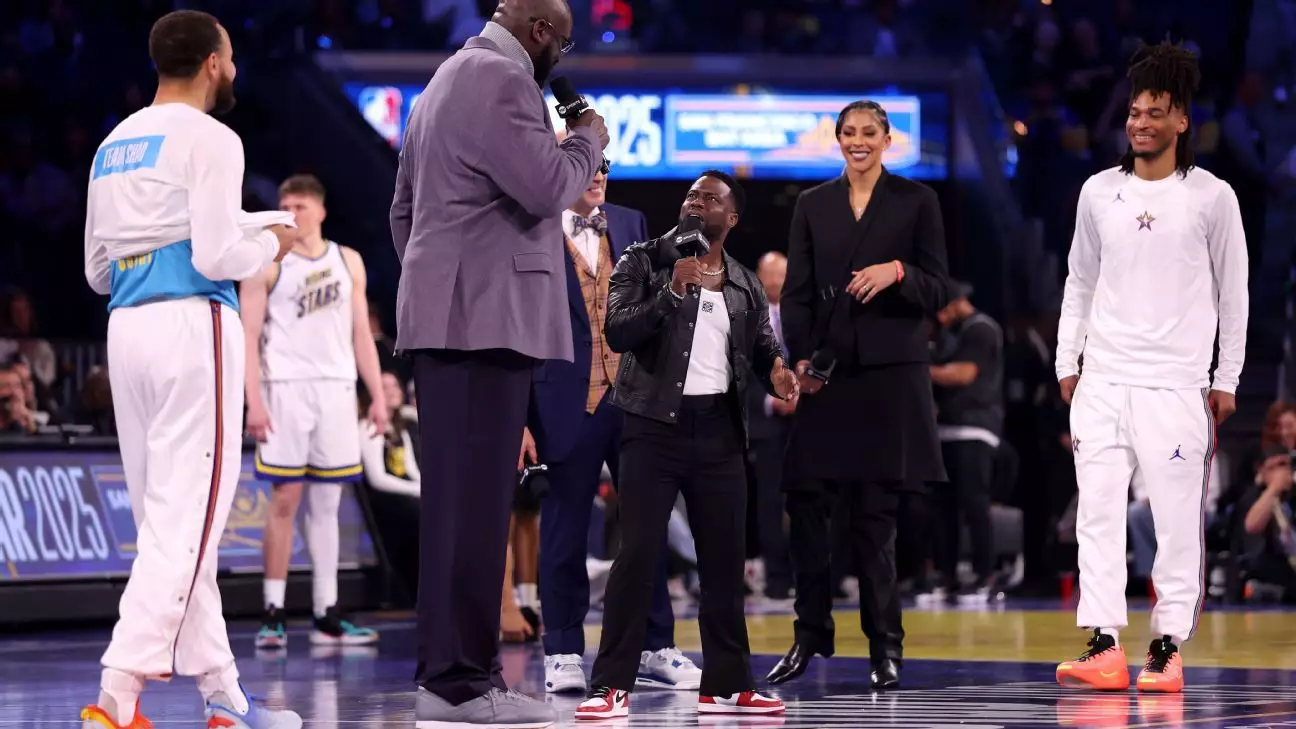The NBA All-Star Game has long served as a highlight of the basketball calendar, a moment where fans celebrate the league’s finest talent. However, the recent introduction of a new tournament format has ignited a wave of debate among players and fans alike. This year’s All-Star showcase in San Francisco attempted to break with tradition by replacing the classic East vs. West rivalry with a single-elimination tournament, generating mixed reactions on the floor and beyond.
The restructured All-Star Game involved four teams competing in quick matchups, each aiming for a target score of 40 points. This year’s event included teams drafted by notable NBA figures: TNT analysts Charles Barkley, Kenny Smith, and Shaquille O’Neal, along with a team built around the winners of the Rising Stars event, helmed by Candace Parker. While the novelty of the format piqued initial interest, it quickly became a point of contention when players voiced concerns over the game’s interruptions.
This tournament-style setup was meant to inject excitement into an event that had sometimes been criticized for lackluster intensity. However, the reality proved more complicated, as athletes contended with numerous breaks in play. Comedian Kevin Hart’s performance during stoppages was intended to entertain, yet players felt the interruptions detracted from the game’s flow. Trae Young’s candid assessment—“I didn’t like the breaks”—highlighted the sentiment that these enforced pauses hampered the competitive spirit the league aimed to cultivate.
Stoppages Diminishing On-Court Intensity
Many players expressed their dissatisfaction with the frequent halts in play. The championship match itself experienced an extended pause—nearly 20 minutes—during a tribute to the TNT crew, which raised eyebrows among those eager to keep the game moving. Shai Gilgeous-Alexander summarized the feeling well, stating, “I would rather play without breaks.” While there was acknowledgment of some entertaining moments and competitive energy, the excessive downtime threatened what could have been an electrifying spectacle.
Jaylen Brown echoed this frustration, noting that although players maintained a level of enjoyment, the interruptions could undermine physical play. “It’s definitely not ideal,” he concluded, encapsulating a broader concern that without continuous gameplay, maintaining a competitive edge becomes an uphill battle.
Star Athletes Missing Impacting the Vibe
Another shadow looming over this year’s All-Star weekend was the absence of marquee players such as LeBron James, Giannis Antetokounmpo, and Anthony Edwards, who could have drastically changed the landscape of the tournament. Their injuries not only limited the star power on display but also altered the dynamics of competition. Although teams featuring players like Stephen Curry and Jayson Tatum emerged victorious, the overall impression remained influenced by the notable omissions.
Curry, who helped his team clinch the championship and earned the MVP title, acknowledged the reset needed for the All-Star Game, suggesting that it was time for an evolution. His conversations with NBA leadership aimed to breathe “new life” into the game, a sentiment echoed by others who want to ensure that future iterations resonate better with both players and fans.
The new format aimed to appeal to differing fan demographics. Draymond Green raised a critical point regarding the inclusion of Rising Stars players in the main event, positing that earlier in his career, access to the All-Star stage was a significant accomplishment. The juxtaposition of seasoned veterans against rookie sensations was an interesting attempt at blending fresh talent with established greatness, yet it raised questions about credibility and the essence of All-Star recognition.
Despite the mixed responses, some players, like Kevin Durant, expressed a willingness to adapt. Durant’s experience indicated that once players settled into the modified format, they were able to find their rhythm and enjoy the game, suggesting a potential avenue for future modifications that may better serve players and fans.
The introduction of this new tournament format for the NBA All-Star Game has undoubtedly opened a discourse on the essence of the showcase. With both praise and criticism from players, it is apparent that while innovation is essential, the execution and understanding of what resonates with athletes and viewers should guide future changes. The All-Star Game needs to strike a delicate balance: honoring its legacy while also embracing fresh experiences—ultimately ensuring that the celebration of basketball talent remains vibrant and revered. As the league looks to refine its approach, one thing is clear: the voices of its players will remain paramount in shaping the All-Star experience for years to come.

